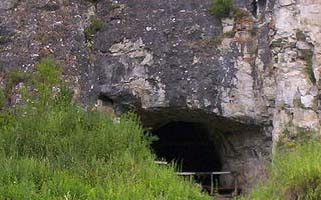 Our newest relatives hailed from around this cave in Siberia.
Our newest relatives hailed from around this cave in Siberia.
In 2008, scientists found a fossil of a humanoid finger in the Denisova Cave in Siberia. The finger was probably from someone (or something) that had been running around Siberia forty thousand years ago.
Until recently, the scientists would have been stuck until they found additional fossils to build up a more complete skeleton. Once they had the skeleton, they could then compare it to other fossils and figure out how it related to modern humans. Of course this might never happen—it would be totally dependent on finding more fossils.
Rather than waiting around, these scientists decided to bring in a geneticist. Nowadays geneticists can sometimes read every base of a fossilized beast’s DNA. In other words, they can read its whole genome.
